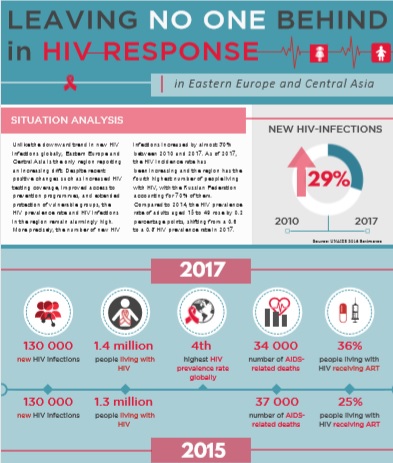
Leaving No One Behind in HIV response: data from Eastern Europe and Central Asia

Despite recent improvements in preventing and responding to HIV in Eastern Europe and Central Asia, the HIV prevalence rate and HIV infections in the region remain alarmingly high. As of 2017, the HIV incidence rate has been increasing and the region has the fourth highest number of people living with HIV. Moreover, the strong intersectional dimension of HIV has heavily impacted the lives of millions of vulnerable people in Eastern Europe and Central Asia. Phenomena such as the feminization of the epidemic and the increased vulnerability among young people should be taken into account when planning an impactful strategy to respond to HIV.
The factsheet ‘Leaving No One Behind in HIV response: data from Eastern Europe and Central Asia’ is an infographic project that aims to provide an overview of the main and most recent HIV-related issues and trends in the region, identifying the needs of the most affected and vulnerable groups.
Based on the extensive analysis of UNAIDS data and statistics, the factsheet covers different aspects of the issue, starting from a presentation of regional trends and phenomena, to cross-country comparisons of data, to a case-study on Tajikistan. To provide a comprehensive analysis, the project concludes with the identification of some of the main drivers that contribute to the persistent presence of HIV in the region and some recommendations to ensure the efficiency of programming and policy-making.